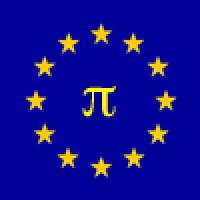
Science in school
Next month will see the launch of a new science magazine which is aimed at teachers across Europe. Editor Eleanor Hayes explains.
On 28 March 2006, we will be launching Science in School, a new European journal to help teachers make their science lessons exciting and inspiring.

In creating this journal, we are well aware of some apparent contradictions. Science is international, while science teaching is organised nationally or regionally. Most of today's science is highly technical and detailed, yet teachers need to excite beginners. Science is moving very quickly, but it sometimes takes many years for new discoveries to work their way into the curriculum. Finally, more and more, the principal language of science is English, whereas the language of the classroom is usually the local language.
But whenever we have put teachers from different subjects and countries in the same room, these contradictions seem to fade away in the face of bigger, universal issues. Science is becoming increasingly international and interdisciplinary. Education systems may be national, but children across the world are curious about the same types of things. The most exciting development of the day may happen anywhere in the world or even in space: it may be a discovery on Mars or in the depths of the ocean, a mathematical breakthrough or a natural disaster. On such days it would be a shame not to put the textbooks aside, and to capitalise on the greatest natural resource in both science and school: curiosity.
For these reasons, Science in School will address science teaching not only across Europe, but also across disciplines: highlighting the best in teaching and cutting-edge research, drawing on the overlap between subjects and the potential for interdisciplinary work. Furthermore, the discussion forum on our website will enable our readers to pose questions, offer solutions and discuss current topics — communicating directly across national and subject boundaries. To achieve these aims, Science in School will contain a wide range of articles to support teachers, including
- Teaching materials to adapt or use directly;
- Articles on cutting-edge science;
- Reviews of current science topics;
- Reports on education projects to join or emulate;
- Interviews with young scientists, who can serve as role models to pupils;
- Interviews with inspiring teachers;
- Discussions of education policy and research;
- Reviews of books, websites and other resources;
- Notices of events for science teachers and their classes.
For Science in School to work, we need the involvement of enthusiastic science teachers. You can help us make this journal into an inspiring, usable resource by:
- Filling in our questionnaire — telling us what you would like to see in Science in School;
- Joining our panel of reviewers and helping us decide which articles are suitable for publication;
- Sending us your own teaching materials for publication;
- Telling us about inspiring education projects you are involved in;
- Writing reviews of books, websites and other resources.
If you would like to help in these or other ways, please send an email to scienceinschool@embl.de.
Science in School will be published quarterly and will be freely available via the web. A limited number of print copies will be available too. It will be published by the EIROforum and based at the European Molecular Biology Laboratory. Science in School is a non-profit activity, part of the NUCLEUS project supported by the European Union. More information is available on our website.